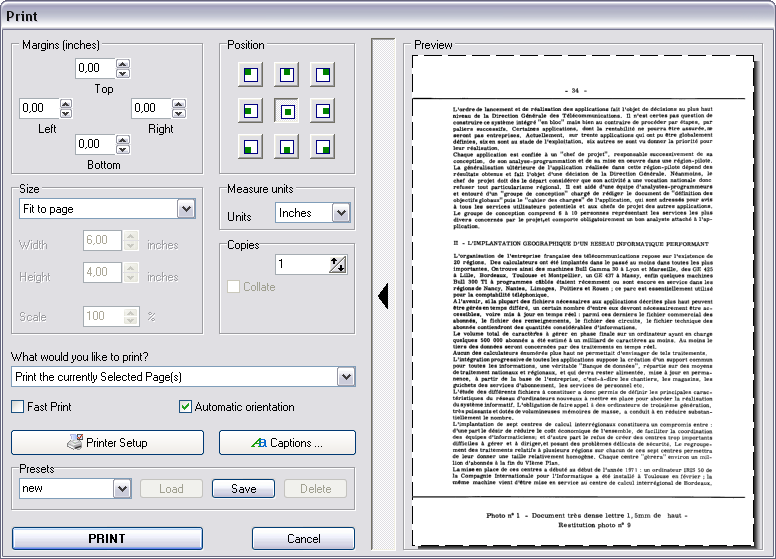Multi Page Tiff Windows 10
I will be the first to admit that the title of this blog post is misleading. Acrobat has never been able to export a multipage (mtiff) file and still can’t.
However, I recently had to help a customer troubleshoot MTIFF conversion and I needed some multipage tiff files.

View a Multi page tiff file in windows I’ve been meaning to write about this for a while. Many people we send images files to don’t know how to view beyond the first page of a multi page tiff file in Windows XP (probably Vista, I haven’t tried).
A bit of background, first.
TIFF is a bitmap format file type used for images. A multipage TIFF file is a single TIF file which contains multiple tif images. MTIFF files are a bit like PDF in that they contain multiple pages, but the similarity ends there.
Over the years, there have been some attempts to add other features to TIFF, but there has been a lack of industry agreement and since PDF was available (and superior IMHO), nothing really came of it.
In this blog post, I’ll show you how to export individual TIFFs of each page of a PDF file and then combine the TIFFs into a multipage (mtiff) file.
Exporting TIFF files from Acrobat
Follow these steps to export each page of your Acrobat file as a separate TIFF. Later, we will combine them.
Open Multi Page Tiff Windows 10
- Open a PDF document in Acrobat DC
- Choose File> Export to> Image > TIFF
- Choose a destination folder
- Name the file
- OPTIONAL: Click the Settings button
- Click the Save button
Acrobat will export each page in the PDF and number them sequentially:
About the Export Settings
If you don’t click the Settings button, Acrobat will determine the colorspace of the file for you. So, if you have a color PDF, it will output a color TIFF file. Color and grayscale files are bigger than monochrome (black and white) files. Generally speaking, legal professionals convert the file to monochrome.
In the settings window, you can change several aspects of your document.
- Monochrome (Black and White)
CCITTG4 compression is the default and generally produces the smallest file size. This compression setting is compatible with just about anything, but ZIP compression may produce almost as small file.Some applications cannot open TIFF files that are saved with JPEG or ZIP compression. In these cases, LZW compression is recommended. - RGB/CMYK/Grayscale/Other
Specifies the type of color management for the output file. For legal workflows, you can ignore this.
- Colorspace/Resolution
This section lets you direct Acrobat to convert the file from (e.g.) color to black and white (monochrome) or from color to shades of gray (grayscale). You can also set the resolution of the file in dots per inch. I recommend 300 dpi for monochrome files.
NOTE: The settings are sticky so the next time you export, the file will convert the same way.
Combining the TIFFs to create a MTIFF
The next step is combine the single page TIFFs into a multipage TIFF. As mentioned previously, Acrobat can’t do this, but you can use the freeware programIrfanview.
IrfanView is free for non-commercial use and works on Windows Vista, Windows 7, Windows 8, and Windows 10. Just click the URL for Irfanview and then find the download link to install it.
Once you have installed Irfanview, follow these steps to combine the TIFFs output from Acrobat to a MTIFF:
- Choose Options> Multipage Images> Create Multipage Images
- In the next window:
- Click the Add images button to grab the TIFF files you previously exported from Acrobat
- Click Compression to choose Compression settings.
I recommend CCITT Fax 4 for most monochrome legal documents. - Give the file a name
- Click Create TIF image to save it.
Can’t I convert PDF to MTIFF directly? What about file size?
There are products that purport to do this. My experience with most products is that the fidelity of the file suffers. I think Acrobat does a superior job converting PDF to other formats.
Multi Page Tiff Windows 10 Update
Irfanview has a PDF plug-in, too, which requires Ghostscript, a Postscript clone driver. I wasn’t successful in getting it to work, but perhaps you’ll have better luck.
One thing you may find when converting PDF to TIFF is that the file size gets a lot larger. TIFF is only an image format while PDF can be vector, text, and image, with each area compressed optimally. Depending on your source file, the MTIFF may be 2 to 100 times larger.